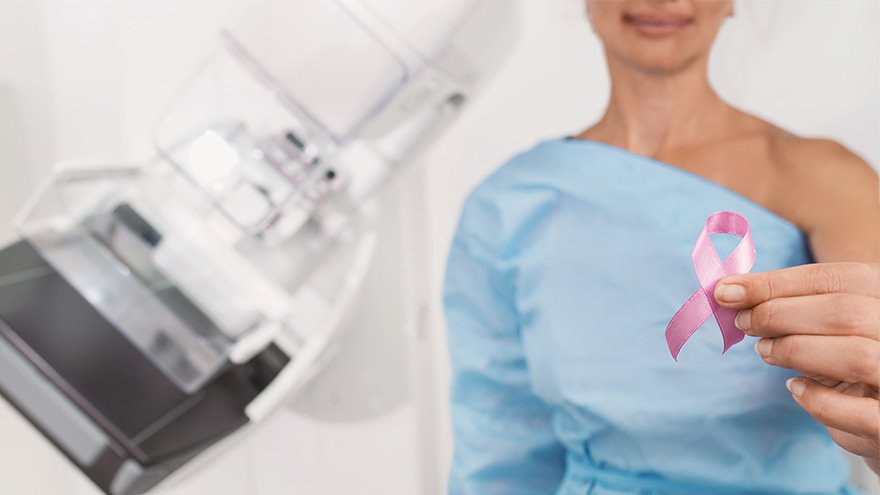
Stay Ahead with Regular Cancer Screenings

Early detection significantly improves treatment outcomes and survival rates. The multidisciplinary care team at the William N. Pennington Cancer Institute offers compassionate support for early detection and diagnosis.
This guide outlines screening recommendations for breast, colorectal, lung, cervical, prostate, and skin cancers.
Breast Cancer Screening
Who Should Get Screened?
- Women aged 40+ at average risk.
- Those with a family history or risk factors should consult their provider—possibly starting before age 40.
Screening Methods
- Mammogram: X-ray to detect tumors before they're felt.
- Breast MRI: For high-risk patients (e.g., genetic/family history).
- Breast Ultrasound: Useful for dense breast tissue; often paired with a mammogram.
What to Expect
- Mammograms involve brief compression of the breast. Some discomfort may occur but is temporary and crucial for early detection.
Colorectal Cancer Screening
Who Should Get Screened?
- Adults 45–75 regularly.
- Under 45? Talk to your provider if you have a family history or genetic risks.
- Over 75? Screening decisions should be based on individual health status.
Screening Methods
- Colonoscopy: Camera exam of the colon; usually every 10 years.
- FIT (Fecal Immunochemical Test): At-home stool test; no prep needed.
- CT Colonography: 3D imaging of the colon (virtual colonoscopy).
What to Expect
- Colonoscopy requires prep and sedation. Follow-ups may vary based on results.
- FIT is simple and non-invasive.
Lung Cancer Screening
Who Should Get Screened?
- Adults 50–80 with a 20+ pack-year smoking history, who currently smoke or quit within the past 15 years.
Screening Method
- Low-dose CT (LDCT): Quick scan with low radiation.
What to Expect
- Non-invasive. Requires holding your breath briefly during imaging.
Cervical Cancer Screening
Who Should Get Screened?
- Women 21–65:
- Ages 21–29: Pap test every 3 years
- Ages 30–65: Pap + HPV test every 5 years, or Pap alone every 3 years
Screening Methods
- Pap Test: Collects cervical cells to detect precancers.
- HPV Test: Identifies high-risk strains of HPV.
What to Expect
- A quick procedure with minor discomfort; important for early detection.
Prostate Cancer Screening
Who Should Get Screened?
- Men 50+
- Higher risk (African American men, family history, BRCA2 carriers): Start discussing screening at age 40
Screening Methods
- PSA Test: Blood test for prostate-specific antigen.
- Digital Rectal Exam (DRE): Physical check of the prostate.
What to Expect
- PSA: Simple blood draw.
- DRE: Brief procedure, may cause slight discomfort.
Skin Cancer Screening
Who Should Get Screened?
- Anyone with:
- Suspicious or abnormal skin areas
- 50+ moles or atypical moles
- Personal or family history of melanoma
- Positive gene testing (BRCA2, Lynch syndrome)
Screening Methods
- Skin Exam: Visual check by a provider.
- Biopsy: Sample taken for testing if needed.
What to Expect
- Skin exam: Non-invasive.
- Biopsy: Minor procedure with local anesthesia if necessary.
Expert Advice: Protect Your Skin
- Limit sun exposure 10 a.m. – 4 p.m.
- Use shade, hats, protective clothing and broad-spectrum SPF 50 sunscreen
- Skin screenings may not be annual, but are more important with age
Questions to Ask Your Provider
- What is my cancer risk?
- Which screening tests are right for me?
- What are the benefits and risks of each?
- How often should I get screened?
- What happens if a test is abnormal?
Why Screenings Matter
Routine cancer screenings are essential for catching cancer early—when it’s most treatable. Talk with your healthcare provider about the right screenings for your personal risk. Taking action today could save your life tomorrow.
Related Blogs


Do Mammograms Hurt? 4 Myths Debunked
